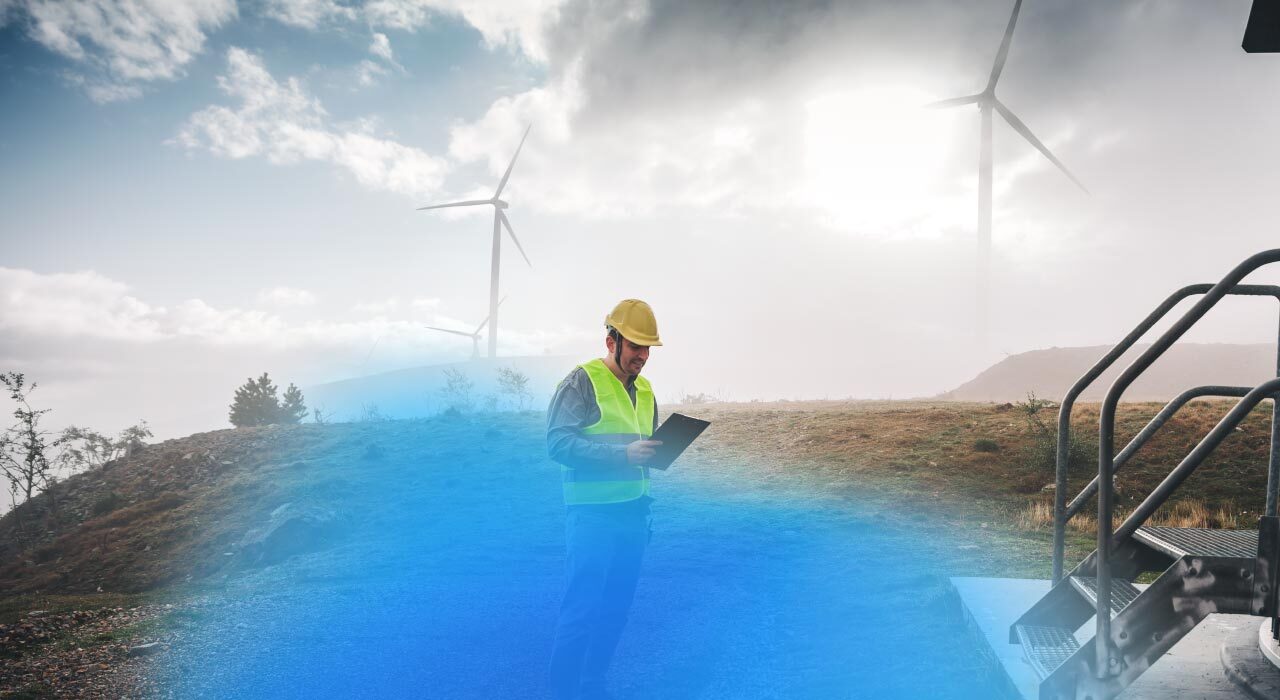Extreme events. Uncertainty. Emerging EV infrastructure. An aging grid. Renewables. Solar. Each one a demanding, critical variable on its own; each one needing to be managed urgently to minimize risk and maximize resilience. Energy asset management is at a tipping point. A new, digital approach to asset and process management is the only way to keep up with the acceleration towards grid modernization and increased demand.
"After decades of disinvestment, our roads, bridges, and water systems are crumbling. Our electric grid is vulnerable to catastrophic outages… It has never been more important for us to invest in strengthening our infrastructure...”
- Fact sheet: The American Jobs Plan, The White House, March 2021
Top five takeaways:
- Make time to review how the Infrastructure Bill could impact your asset management.
- Build process digitalization into the acceleration of grid modernization.
- Start to innovate incrementally over time. This doesn’t have to be all-or-nothing or an overnight job.
- Consider ways you can become more resilient through agility, flexibility, and quick recovery.
- Incorporate best-practice asset optimization into new infrastructure, as it emerges. Remember - you’ll need to respond at speed, while also making the right decisions.
A renewed electric grid, renewed electric demand
One of the key pledges in the Biden administration’s American Jobs Plan is a renewed electric grid. Another, is a $174 billion investment, aimed at winning the EV market. You better believe the pressure on energy utilities is about to mount. As asset managers, we’ve known for years that the perfect storm of increased demand and an aging grid would reach an inevitable inflection point, and soon. That inflection point has arrived.
And to ride the uptick, you’ll need to get things ready now. That means getting the smart, digital processes in place to empower your organization and act as guardrails for an increasingly demanding landscape.
Mitigating and managing these external influences will require new ways of working. Sustaining siloed spreadsheets of disparate data, and all the associated inconsistencies and inefficiencies, won’t work anymore. Information – and the effective management of it – is the lifeblood of any organization operating today, but especially an asset-intensive one. Taking action now will make your life easier long-term.
Data science, machine learning, predictive analytics – these aren’t just buzzwords. These are critical skills that asset managers will need to make the best decisions for their portfolios going forward.
Technology purpose-built for energy asset management
The human brain can’t manage the sheer amount of information an asset manager has to deal with today - and make informed decisions. That’s why you need to get the right technology in place to support the inputs you have to process and the decisions you need to make.
Decades of engineering experience and expertise gathered as part of Arcadis, means that Arcadis Gen deeply understands the challenges of energy asset management and knows what you’re on the hook for. This first hand knowledge of engineers’ very real needs, coupled with a vision for how new technologies can support them was the impetus to establish Arcadis Gen – and in particular, AppliedInsight. It’s SaaS, but it’s been built from the ground up to help overcome your existing pain points. No more crowbarring your asset data into vanilla ‘big tech’ solutions - systems built for the parameters you already monitor, to inform the decisions you already make.
Replace risk with resilience
A resilient organization is one that can recover easily from stress. With multiple external and internal stressors impacting asset portfolios, building resilience into strategy is fundamental.
An integral component of asset management is controlling and resetting risk to acceptable levels. Mitigating the chance of outages, and their impacts when they do occur. Replacing risk with resilience at every possible point is key to managing a successful network moving forward, however, you need the right tools - and data - to be able to do this.
Balancing corporate risk and investment performance requires evidence-based insights, and evidence-based insights require data. You need to understand what your system is capable of – and how far it can stretch. Your transmission structures, your substations, your distribution — they’re all essential to your ability to stay up-and-running in increasingly extreme environments. Get to know them now.
Respond at speed
A truly resilient organization is one that builds resilience across the whole organization: financial, reputational, technological. There is opportunity in data to understand where vulnerabilities are, and to better target interventions. You need to be able to clearly see the opportunities across your portfolio, as they evolve.
Resilience depends on being able to react at speed, and react in the right way. The only way it’s possible to do that is with a shared, consistent, single source of truth across your organization, so while you make quick decisions, you make sure they’re evidence-based. That requires data.
Did you find this information useful?
Did you find this information useful?
Thank you for your feedback!

 Back
Back








